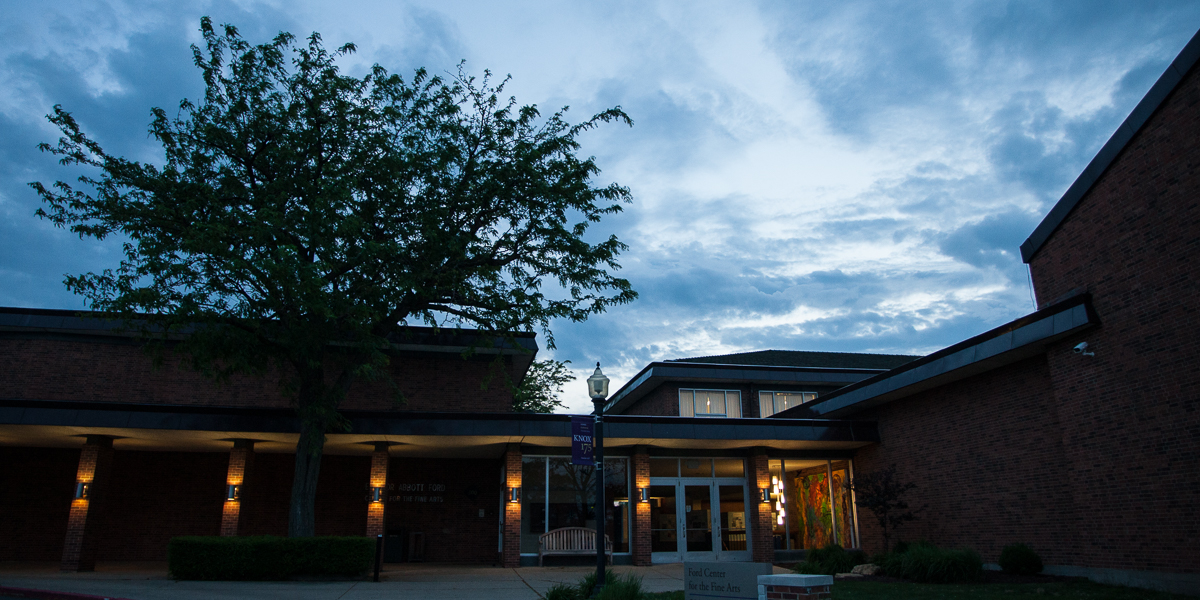

Venture Boldly

Explore other offices & services
Career Success, Bastian Family Center for
College Engagement, Office of Advancement
Community Service, Mark & Jeannette Kleine Center for
Disability Support Services, Office of
Global Studies, Eleanor Stellyes Center for
Government & Community Relations, Office of
Immigration & International Travel Communications
Information Technology Services
Institutional Research, Office of
International Student Services, Office of
Knox Advisory Committee on Socially Responsible Investing
Research & Advanced Study, Gerald & Carol Vovis Center for
Student Development, Division of
Student Financial Services, Office of

STAT 200 Introductory Statistics
A study of the acquisition, presentation, analysis, and interpretation of data. Topics include: descriptive statistics and statistical graphics, experiments vs. observational studies, elementary probability, random variables and distributions, sampling distributions of statistics, confidence intervals, hypothesis testing for means and proportions, correlation, linear regression, and an introduction to ANOVA. Prerequisite(s): Not open to first-year, first-term students; Prerequisite: satisfaction of the Mathematics Proficiency requirement; QR; Staff
STAT 223 Applied Analytics
This course teaches students several of the main methodologies that are used in Applied Analytics, and gives them experience in doing analyses of large real (or realistic) data sets. Specifically, students will learn to: (1) predict values of continuous response variables using ordinary regression; (2) form models for time series data that enable forecasting of future values of the series; and (3) use historical data on the dependence of a binary response (success or failure) on several possible predictors to classify new data as probable success or failures. For each of these types of problems, they will learn how to carry out the analysis using appropriate technological tools, for instance Excel or R. An introduction to macro programming in Excel is included. Ethical issues in the use of analytics are also addressed. Prerequisite(s): STAT 200 or equivalent. Previous experience with R and Excel is recommended; Offered every year Spring; A. Leahy
STAT 225 Linear Models and Statistical Software
This course develops further the ideas and techniques that were introduced in STAT 200 relative to regression modeling and experimental design, understood as instances of a matrix linear model. In addition, the student becomes familiar with at least one leading statistical package for performing the intensive calculations necessary to analyze data. Topics include linear, non-linear, and multiple regression, model-building with both quantitative and qualitative variables, model-checking, logistic regression, experimental design principles, ANOVA for one-, two-, and multiple factor experiments, and multiple comparisons. Prerequisite(s): STAT 200, MATH 145 or 151, and MATH 185; Cross Listing: MATH 225; Offered every year Winter; Staff
STAT 312 Data Mining & Statistical Computing
A rigorous exploration of statistical methods designed to glean information from a data set. Techniques include categorical analysis, clustering, trees and forests, dimensionality reduction, outlier detection. Further topics include graphical and statistical methods for exploring data, as well as evaluating statistical methods. Computer programs, such as Python and R, will be used. Prerequisite(s): STAT 200 or equivalent, an additional STAT course, CS 142, MATH 151 and 152 (or MATH 145), and MATH 185; Cross Listing: CS 312; Offered alternate years, Winter; O. Forsberg
STAT 321 Mathematical Statistics I
An advanced study of probability theory. Sample spaces, random variables and their distributions, conditional probability and independence, transformations of random variables. Prerequisite(s): MATH 145 (with MATH 146 recommended) or MATH 205, and MATH 185; Cross Listing: MATH 321; Usually offered every year FA or WI; A. Leahy; O. Forsberg
STAT 322 Mathematical Statistics II
A rigorous study of the theory of statistics with attention to its applications. Point and interval estimation, hypothesis testing, regression and correlation, goodness-of-fit testing, analysis of variance. Prerequisite(s): MATH/STAT 321; Cross Listing: MATH 322; Offered alternate years, usually WI or SP; O. Forsberg
STAT 323 Machine Learning
In this course, students learn and use several of the data analysis algorithms and methodologies that are common in Machine Learning to use historical data to predict or classify a target variable using other feature variables. Specifically, students will learn to: (1) understand and implement supervised learning strategies such as logistic regression, nearest neighbors, support vector machines, decision trees, and linear scoring for prediction and classification; (2) evaluate and optimize the success of these models; (3) apply appropriate technological tools such as Python or R to carry out data analysis; and (4) communicate the results of analyses effectively orally and in writing, with an accompanying understanding of ethical considerations. Prerequisite(s): CS 142, MATH 151 and 152 (or MATH 145), and MATH 185.; Cross Listing: CS 323; Offered alternate years, Winter; A. Leahy
STAT 360 Research in Statistics I (1/2)
STAT 360-361 is a sequence of two courses in which students engage in research of a topic not normally covered elsewhere in the statistics curriculum. If the research topic is to take one term, the student should register for STAT 361. If the research is to take place over two terms, the student should register for STAT 360 for the first term, then STAT 361 for the second. Prerequisite(s): STAT 225 or permission of the instructor; Staff
STAT 361 Research in Statistics II (1/2 or 1)
Students conclude their statistical research, producing a written report and an oral presentation of their results. Prerequisite(s): STAT 225 or permission of the instructor; IMMR if taken for a full credit; Staff